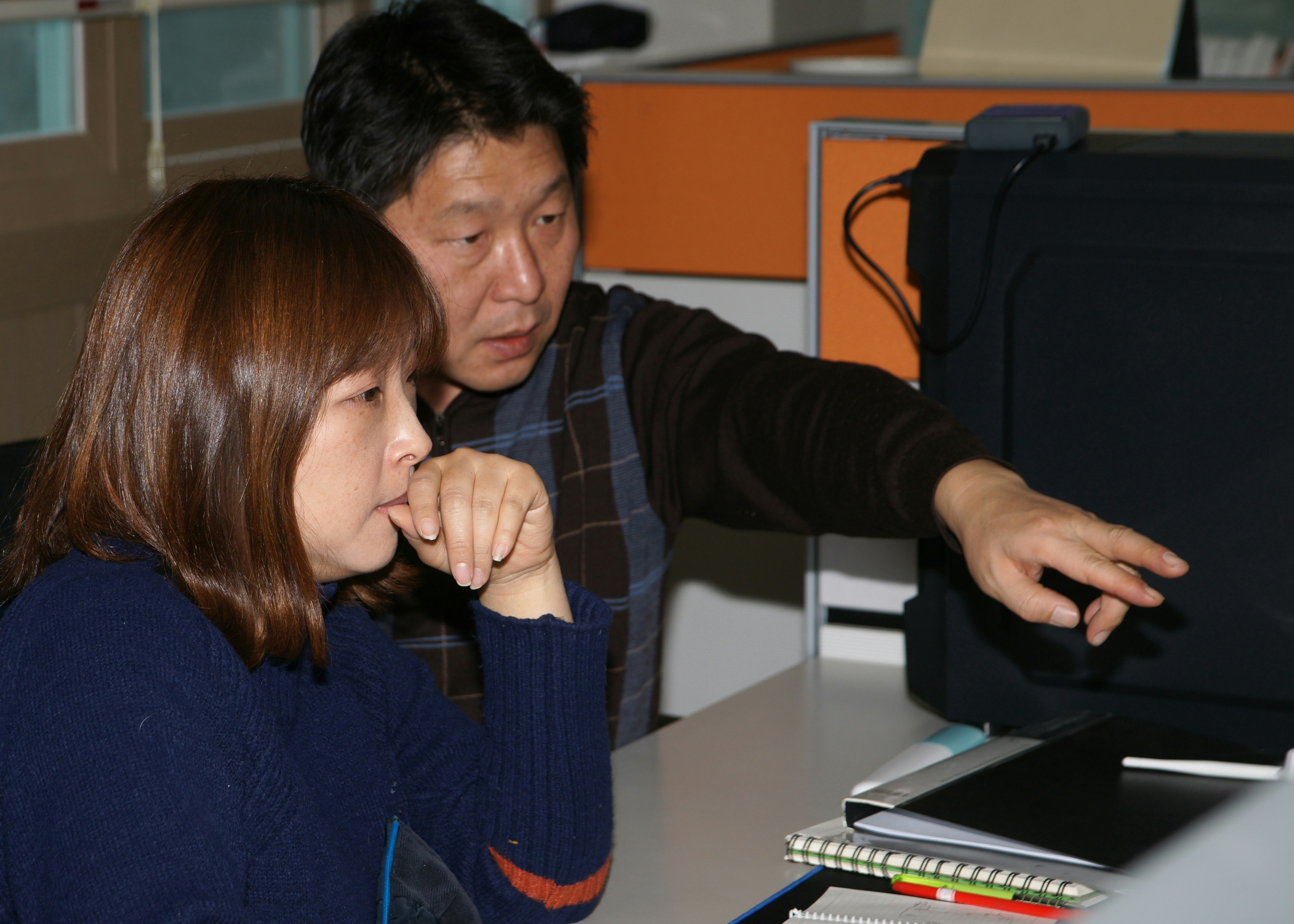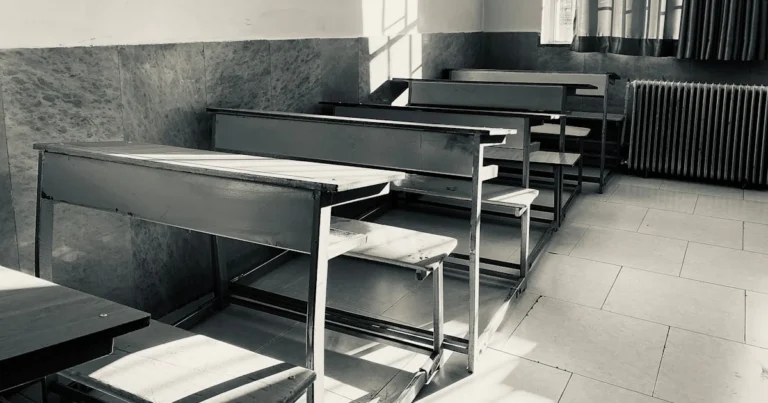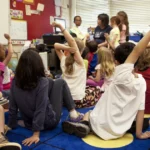Support our educational content for free when you buy through links on our site. Learn more
31 Proven Effective Methods for Classroom Management (2025) 🚀
Managing a classroom can sometimes feel like trying to herd cats—energetic, unpredictable, and occasionally downright mischievous cats. But what if we told you there’s a treasure trove of 31 proven strategies that can transform your classroom chaos into a harmonious learning environment? From setting crystal-clear expectations to leveraging tech tools like Prodigy and ClassDojo, this guide covers everything you need to know to master classroom management in 2025 and beyond.
Did you know that teachers lose up to 50% of instructional time due to behavioral disruptions? Imagine reclaiming that time with proactive strategies that engage students, foster positive relationships, and build a community where everyone thrives. Stick around, because later we’ll reveal how simple tweaks—like a “cool down corner” or a well-timed brain break—can make all the difference. Ready to turn your classroom into a powerhouse of learning and respect? Let’s dive in!
Key Takeaways
- Proactive management is key: Over 80% of effective classroom control comes from setting routines, clear expectations, and engaging lessons before problems arise.
- Relationships matter: Building trust and positive connections with students reduces disruptions and boosts engagement.
- Use technology wisely: Tools like Prodigy and ClassDojo can enhance behavior tracking and student motivation.
- Tailor strategies: Different students need different approaches—differentiated management and student choice empower learners.
- Self-care fuels success: Teacher well-being directly impacts classroom climate and management effectiveness.
👉 Shop Classroom Management Tools:
- Prodigy Math Game: Amazon | Official Website
- ClassDojo: Amazon | Official Website
- GoNoodle Movement Videos: Official Website
Table of Contents
- ⚡️ Quick Tips and Facts for Classroom Harmony
- 🕰️ The Evolution of Classroom Control: A Historical Perspective
- 🚀 Launching Success: Proactive Classroom Management Strategies (30+ Game-Changers!)
- 1. Setting the Stage: Clear Expectations & Routines
- 2. Building Bridges: Fostering Positive Relationships
- 3. Engaging Minds: Dynamic Instruction & Student Voice
- 4. Designing Spaces: The Power of Physical Environment
- 5. Tech-Savvy Solutions: Leveraging Digital Tools for Order
- 6. Cultivating Calm: Integrating Social-Emotional Learning (SEL)
- 7. The Art of Presence: Non-Verbal Cues & Teacher Stance
- 8. Positive Reinforcement Power-Ups: Beyond Stickers!
- 9. Group Dynamics: Collaborative Learning & Peer Accountability
- 10. Anticipating Hurdles: Proactive Problem-Solving
- 11. Differentiated Management: Tailoring Approaches for Diverse Learners
- 12. The Power of Choice: Empowering Student Autonomy
- 13. Brain Breaks & Movement: Re-energizing the Classroom
- 14. Humor & Lightness: The Secret Weapon of Engagement
- 15. Student Leadership Roles: Ownership & Responsibility
- 16. Visual Schedules & Cues: Clarity for All Learners
- 17. The “Warm Demander” Approach: High Expectations, High Support
- 18. Mindfulness & Self-Regulation Practices
- 19. Strategic Seating Arrangements: Optimizing Interactions
- 20. The “First Five Minutes” Rule: Setting the Tone
- 21. Effective Transitions: Minimizing Downtime Chaos
- 22. The Power of Proximity: Being Everywhere at Once (Almost!)
- 23. Using Data to Inform Decisions: Tracking Behavior Trends
- 24. Peer Mentoring & Buddy Systems: Students Helping Students
- 25. The “Cool Down” Corner: A Safe Space for Regulation
- 26. Restorative Practices: Repairing Harm & Building Community
- 27. Gamification of Behavior: Making Management Fun!
- 28. The Power of Silence: Strategic Pauses
- 29. Student-Led Goal Setting: Ownership of Behavior
- 30. The “One-Minute Intervention”: Quick & Effective Check-ins
- 31. Leveraging Student Interests: Personalized Engagement
- 🚨 When Things Go Sideways: Responsive Classroom Management & Intervention Strategies
- 🤝 The Village Approach: Collaborating for Classroom Success
- 🧘♀️ Teacher Thriving: Self-Care as a Classroom Management Tool
- ⚖️ Navigating the Legal Landscape: Rights, Responsibilities, and Ethical Considerations
- ❓ Classroom Management Strategy FAQs: Your Burning Questions Answered!
- 💡 Conclusion: Mastering the Art of Classroom Management
- 🔗 Recommended Links for Further Exploration
- 📚 Reference Links: Our Sources & Inspirations
Here is the main body content for your blog post.
Welcome, fellow educators, to the Teacher Strategies™ think tank! We’re the team that’s been there, done that, and has the glitter glue stains to prove it. Today, we’re diving headfirst into the deep end of the pool: effective methods for classroom management. Let’s be real, this isn’t just about keeping the peace; it’s about creating a thriving ecosystem where learning can actually happen. Forget the old-school “sit down and be quiet” model. We’re talking about building a classroom community that runs so smoothly, you’ll actually have time to, you know, teach.
So, grab your favorite flair pen, take a deep breath, and let’s transform your classroom from a chaotic circus into a well-oiled learning machine. Ready? Let’s do this!
⚡️ Quick Tips and Facts for Classroom Harmony
Before we unpack the treasure chest of strategies, let’s get a bird’s-eye view. Think of this as your classroom management cheat sheet. We believe that the best classroom management is built on a foundation of solid what are examples of effective teaching strategies?.
Here are some eye-opening stats and quick-fire tips to get your mind buzzing:
| Fact/Statistic 📊 | The Lowdown & Why It Matters |
|---|---|
| Lost Learning Time | Teachers can lose up to 50% of instructional time to behavioral disruptions. (Source: The Education Trust) |
| Teacher Burnout | A staggering 44% of new teachers leave the profession within five years, with poor student discipline cited as a primary reason. (Source: The National Center for Education Statistics) |
| The Relationship Factor | Students in classrooms with strong teacher-student relationships are more engaged academically and socially. (Source: American Psychological Association) |
| Proactive vs. Reactive | Roughly 80% of classroom management should be proactive (setting up for success) rather than reactive (dealing with problems). |
Quick Tips from the Trenches:
- ✅ Greet every student at the door. A simple “Hello, Maria!” or a high-five can set a positive tone for the entire day.
- ✅ Narrate the positive. Instead of “Stop talking,” try “I see Jaden is ready with his book open. Thank you, Jaden! I see Sarah is ready, too.” The others will follow suit.
- ✅ Have a plan for everything. What do students do when they finish early? When they need a pencil? When the fire alarm goes off? Plan it, teach it, practice it.
- ❌ Don’t hold grudges. Every day is a new day. A student who had a rough Tuesday can have a stellar Wednesday. Let it go.
🕰️ The Evolution of Classroom Control: A Historical Perspective
Ever wonder how we got here? Classroom management wasn’t always about restorative circles and brain breaks. Oh no. Let’s take a quick trip in the Teacher Strategies™ time machine!
Picture this: a one-room schoolhouse, a stern schoolmaster, and a ruler that was used for more than just drawing straight lines. The prevailing philosophy was simple: control through fear. This was the era of behaviorism, heavily influenced by thinkers like B.F. Skinner, where behavior was seen as a simple response to rewards and (often harsh) punishments.
Fast forward through the decades. We saw a shift towards a more psychological approach. We started asking why students were acting out. Was it a cry for help? An unmet need? This is where we began to understand that a child isn’t just a misbehaving robot; they’re a complex human being.
Today, we’re in the golden age of positive and proactive management. We’ve moved from “control” to “community,” from “discipline” to “guidance.” We draw on social-emotional learning (SEL), neuroscience, and restorative justice. The goal isn’t just compliance; it’s to build self-regulated, empathetic, and responsible citizens. It’s a whole lot more work, but the payoff is a classroom culture that truly supports every single learner.
🚀 Launching Success: Proactive Classroom Management Strategies (30+ Game-Changers!)
Alright, this is the main event! The secret to a peaceful classroom isn’t a magic wand; it’s being proactive, not reactive. It’s about building the ship to be seaworthy before you hit the storm. We’ve polled our team of veteran educators and scoured the research to bring you over 30 of our absolute favorite, battle-tested strategies.
1. Setting the Stage: Clear Expectations & Routines
This is your foundation. If you do nothing else, do this. Students thrive on predictability. They need to know what’s expected of them for everything from sharpening a pencil to turning in homework.
- Our Take: In the first week of school, we don’t dive into curriculum. We become drill sergeants of procedure—in the nicest way possible! We practice lining up. We practice turning in papers. We practice what “active listening” looks and sounds like. It feels slow, but it pays off a thousand times over. As the experts at Schools That Lead put it, “Routines provide security and predictability.” ✅
2. Building Bridges: Fostering Positive Relationships
You can’t manage students you don’t know. Period. Every single strategy hinges on this. They won’t care what you know until they know that you care.
- Try This: Use “2×10” a strategy: Spend 2 minutes a day for 10 consecutive days talking to a challenging student about anything other than school. Their favorite video game, their pet, their weekend plans. You’ll be amazed at the transformation.
3. Engaging Minds: Dynamic Instruction & Student Voice
A bored student is a disruptive student. The most powerful management tool is a killer lesson plan. When kids are genuinely engaged, they don’t have time to get into trouble.
- Pro Tip: Give them a voice! The Prodigy blog wisely suggests you should “Let Students Help Establish Guidelines” because it creates “more buy-in than just telling them what they’re not allowed to do.” Ask for their input on class rules, project topics, or even the order of the day’s activities. This is a core tenet of our Instructional Strategies philosophy.
4. Designing Spaces: The Power of Physical Environment
Your classroom layout is a silent teacher. Can you easily walk to every student? Are high-traffic areas (like the pencil sharpener) clear of congestion? Is the room inviting and organized?
- Think About: Flexible seating! It’s not for everyone, but offering choices like standing desks, wobble stools, or beanbag chairs can be a game-changer for students who need to move. Start small with a “reading corner” or a “quiet work zone.”
5. Tech-Savvy Solutions: Leveraging Digital Tools for Order
Technology can be a huge distraction… or your best friend. Use it wisely!
- Tools We Love:
- ClassDojo: Great for tracking positive behaviors and communicating with parents.
- Bouncy Balls: A fun, free website that uses your computer’s microphone to visually display the noise level in the room. The kids love trying to keep the balls from bouncing!
- Google Classroom: Streamlines assignments and reduces the “I lost my paper” chaos.
6. Cultivating Calm: Integrating Social-Emotional Learning (SEL)
Teaching students to identify and manage their emotions is one of the most proactive things you can do. When a student can say, “I’m feeling frustrated,” instead of throwing a book, you’ve won.
- Simple Start: Use a “feelings check-in” every morning. Students can point to an emoji chart or write down a word that describes their mood. It gives you valuable data and gives them emotional vocabulary.
7. The Art of Presence: Non-Verbal Cues & Teacher Stance
You can quiet a chatty table without saying a word. It’s all about presence.
- The Look: Develop a calm, neutral “teacher look.” It’s not a death glare; it’s a simple, direct eye contact that says, “I see you, and I need you to get back on track.”
- Proximity: As noted by Schools That Lead, proximity control is huge. Just walking over and standing near an off-task student is often enough to redirect them.
8. Positive Reinforcement Power-Ups: Beyond Stickers!
Praise is powerful, but it has to be specific and genuine. Instead of “Good job,” try “I love how you used three different sources in your paragraph. That shows excellent research skills.”
- Beyond Tangibles: While small prizes have their place, the best rewards are often experiences. Think: 5 extra minutes of free reading, getting to be the teacher’s assistant, or choosing the music for cleanup time.
9. Group Dynamics: Collaborative Learning & Peer Accountability
Group work can be chaos or magic. The key is structure.
- Group Contracts: We love this idea from the Prodigy article: have students create and sign group contracts. They set their own rules for participation and how to handle disagreements. This builds incredible ownership.
10. Anticipating Hurdles: Proactive Problem-Solving
Think like a chess master, always three moves ahead. What could go wrong with this science lab? Where will the bottlenecks be during this transition? Plan for it.
- Anecdote: Our veteran teacher, Sarah, always pre-labels and pre-sorts everything for art projects. She says, “The 15 minutes of prep saves me 30 minutes of chaos and ‘Mrs. S, I can’t find the blue paper!’ later.”
11. Differentiated Management: Tailoring Approaches for Diverse Learners
Fair isn’t always equal. Some students need more support, different boundaries, or unique motivators. This is where Differentiated Instruction meets classroom management. A one-size-fits-all approach will always fail someone.
12. The Power of Choice: Empowering Student Autonomy
Even small choices can give students a powerful sense of control.
- Examples:
- “Do you want to do the odd-numbered problems or the even-numbered ones?”
- “You can write your report or create a slideshow.”
- “Would you like to work at your desk or on the floor with a clipboard?”
13. Brain Breaks & Movement: Re-energizing the Classroom
Kids are not designed to sit still for hours. A quick, 3-minute break for stretching, dancing, or a silly game can reset the entire room’s energy.
- Our Go-To: GoNoodle is a lifesaver. It has hundreds of free, short videos for dancing, mindfulness, and movement that kids absolutely love.
14. Humor & Lightness: The Secret Weapon of Engagement
Don’t be afraid to be silly! A well-timed joke or a moment of shared laughter can defuse tension and build community faster than almost anything else. ✅
15. Student Leadership Roles: Ownership & Responsibility
Give students jobs! “Line Leader” and “Paper Passer” are just the beginning. Think: “Class Librarian,” “Tech Support,” “Greeter,” “Botanist” (for the class plant). When they have ownership over the room, they take better care of it.
16. Visual Schedules & Cues: Clarity for All Learners
Post the day’s schedule visually. Use pictures for younger students or those with language barriers. This answers the dreaded “What are we doing next?” question before it’s even asked.
17. The “Warm Demander” Approach: High Expectations, High Support
This is a powerful concept. It means you hold students to a very high standard while also providing immense support and showing them you care. It’s the perfect balance of warmth and accountability. It says, “I believe in you, and I will not let you fail.”
18. Mindfulness & Self-Regulation Practices
Teach kids how to take a “belly breath.” Practice a minute of silent, mindful listening. These aren’t “fluffy” extras; they are critical skills for focus and emotional control.
19. Strategic Seating Arrangements: Optimizing Interactions
Don’t let seating be an afterthought. Mix it up! Sometimes rows are best for direct instruction. Sometimes pods are best for collaboration. Be intentional and don’t be afraid to change it every few weeks to keep things fresh.
20. The “First Five Minutes” Rule: Setting the Tone
The start of class is crucial. Have a “Do Now” or “Bell Ringer” activity on the board that students begin the moment they walk in. This eliminates chatter and wasted time and gets them into learning mode immediately. This is a key part of effective Lesson Planning.
21. Effective Transitions: Minimizing Downtime Chaos
The time between activities is where chaos is born. Make transitions a game.
- Try This: Use a timer. “Let’s see if we can clean up our art supplies and be ready for math in under two minutes! Go!”
22. The Power of Proximity: Being Everywhere at Once (Almost!)
Never teach from your desk. Circulate. Wander. Move around the room constantly. Your physical presence is a powerful, non-confrontational management tool.
23. Using Data to Inform Decisions: Tracking Behavior Trends
Keep a simple log. Is Johnny always acting out during math? Is the class always rowdy after lunch? Seeing patterns helps you identify the root cause and find a solution.
24. Peer Mentoring & Buddy Systems: Students Helping Students
Pairing a struggling student with a patient, kind peer can be incredibly effective. The Prodigy blog notes this is “especially beneficial for students who suffer from low confidence and poor interpersonal skills.” The tutor reinforces their own knowledge, and the tutee gets one-on-one help.
25. The “Cool Down” Corner: A Safe Space for Regulation
This is NOT a punishment corner. It’s a safe, quiet space where a student can go voluntarily when they feel overwhelmed or upset. Stock it with a soft pillow, some stress balls, and a feelings chart. It teaches self-regulation, not shame.
26. Restorative Practices: Repairing Harm & Building Community
When conflict happens, shift the focus from “What rule was broken?” to “Who was harmed, and how can we fix it?” Restorative circles and conversations help students develop empathy and problem-solving skills.
27. Gamification of Behavior: Making Management Fun!
Turn classroom management into a game. The whole class can work together to earn points for a “level up” reward, like a pizza party or extra recess. Individual students can earn “XP” for meeting personal goals.
28. The Power of Silence: Strategic Pauses
When the class is getting noisy, resist the urge to talk over them. Just stop talking. Stand silently at the front of the room and wait. It’s often more effective than shouting.
29. Student-Led Goal Setting: Ownership of Behavior
Sit down with students individually and help them set one simple, achievable behavioral or academic goal for the week. “I will raise my hand before speaking.” “I will turn in all my homework.” This fosters self-awareness and accountability.
30. The “One-Minute Intervention”: Quick & Effective Check-ins
You don’t need a 30-minute conference to address a behavior. A quick, private, one-minute chat can work wonders. “Hey, I noticed you were having a tough time focusing today. Is everything okay? Remember our goal for this week. I know you can do it.”
31. Leveraging Student Interests: Personalized Engagement
Do you have a class full of kids obsessed with Minecraft or Taylor Swift? Use it! Create math word problems about mining for diamonds. Analyze Taylor Swift lyrics for poetic devices. When you connect learning to their passions, engagement skyrockets.
🚨 When Things Go Sideways: Responsive Classroom Management & Intervention Strategies
Let’s be honest: even in the most well-managed classroom, you’re going to have tough days. A student will have a meltdown. A lesson will bomb. That’s okay! The key is how you respond.
Understanding the “Why”: Root Causes of Challenging Behavior
Behavior is communication. A student acting out is trying to tell you something. Before you can address the behavior, you have to play detective and figure out the “why.” According to the Child Mind Institute, common functions of behavior include:
- Seeking attention: Both positive and negative.
- Escaping or avoiding a task: The work is too hard, too easy, or they’re afraid of failing.
- Accessing a tangible item: They want the toy, the iPad, the cool eraser.
- Sensory needs: They are overstimulated by noise or under-stimulated and need to move.
- Unmet basic needs: Are they hungry, tired, or feeling unsafe? (Think Maslow’s Hierarchy).
De-escalation Techniques: Keeping Your Cool When They Can’t
When a student is escalating, your calm is their anchor. Your primary job is to not get into the storm with them. The Crisis Prevention Institute (CPI) offers great advice.
Our Top 5 De-escalation Steps:
- Control your own breathing. Take a slow, deep breath before you speak.
- Use a calm, quiet voice. Don’t match their volume.
- Give them space. Don’t crowd an agitated student. Stand at an angle, not head-on, which is less confrontational.
- Validate their feeling (not the behavior). “I can see that you are very angry right now.”
- Offer a choice or a way out. “Would you like to take a break in the cool-down corner or get a drink of water?”
Logical Consequences vs. Punishment: Teaching, Not Just Telling
This is a critical distinction. Punishment is about making a student suffer for their mistake. A logical consequence is about helping them learn from it.
| Aspect | Punishment ❌ | Logical Consequence ✅ |
|---|---|---|
| Goal | To control, blame, and enforce power. | To teach responsibility and problem-solving. |
| Focus | On the past mistake. | On the present and future solution. |
| Example | A student writes on a desk, so they lose recess. | A student writes on a desk, so they have to clean the desk. |
| Student’s Feeling | Resentment, anger, “I got caught.” | “I made a mistake, and I can fix it.” |
As the CUNY CTLT article states, “The goal is to correct behavior, not to punish the student.“
Behavior Intervention Plans (BIPs) & Functional Behavior Assessments (FBAs)
For students with chronic, significant behavioral challenges, you may need to move to more formal supports.
- An FBA is the detective work: a formal process to figure out the “why” (or function) of a student’s behavior.
- A BIP is the game plan: a formal plan, based on the FBA, that outlines specific proactive strategies, replacement behaviors to teach, and responsive strategies to use.
These are typically developed with a team, including school psychologists and special education staff. You can learn more about this process at Understood.org.
🤝 The Village Approach: Collaborating for Classroom Success
You are not an island! The most successful teachers know that classroom management is a team sport.
Partnering with Parents & Guardians: Your Essential Allies
Parents are your number one resource. They know their child better than anyone.
- Start Positive: Make a positive phone call or send a positive email home for every single student within the first month of school. This builds a bank of goodwill. The Prodigy blog highlights how “pleasantly surprising their parents” with good news can be a huge motivator for students.
- Use Tech: Apps like Remind or the messaging feature in ClassDojo make communication quick and easy.
- Assume Good Intentions: When a parent comes to you with a concern, remember that you both want the same thing: for their child to succeed. Listen with an open mind.
Teamwork Makes the Dream Work: Collaborating with Colleagues & Support Staff
Lean on your team!
- Your Grade-Level Team: What’s working in their classrooms? Share strategies and frustrations.
- Support Staff: The school counselor, social worker, psychologist, and special education teachers are experts. Ask for their help! Invite them to observe a student or brainstorm solutions.
- Instructional Coaches: If your school has one, use them! An Instructional Coach can provide non-judgmental feedback and be a fantastic thought partner.
Community Resources: Tapping into External Support
Sometimes, a student’s needs go beyond what the school can provide. Know what’s available in your community. This could be local mental health agencies, after-school programs at the Boys & Girls Club, or weekend food programs. Your school counselor is usually the best person to ask about these resources.
🧘♀️ Teacher Thriving: Self-Care as a Classroom Management Tool
Here’s a truth bomb: You cannot pour from an empty cup. Your own well-being is a non-negotiable classroom management strategy. A stressed, frazzled, exhausted teacher cannot create a calm, positive learning environment.
Preventing Burnout: Sustaining Your Energy & Enthusiasm
Teacher burnout is real and devastating. As the Prodigy summary points out, “Poor classroom management can increase teacher stress and burnout.” You have to be intentional about protecting your own energy.
- Set Boundaries: Leave school at a reasonable hour. Don’t check your email at 10 PM. It’s okay for some things to wait until tomorrow.
- Find Your “Third Place”: Find a place that is not home and not work where you can decompress. For some, it’s the gym. For others, it’s a coffee shop or a hiking trail.
- Celebrate Small Wins: Did you make it through a tough Tuesday? Did a struggling student finally have a breakthrough? Acknowledge it. You’re doing amazing work.
Mindfulness for Educators: Staying Centered in Chaos
You don’t need to become a Zen master, but a little mindfulness can go a long way.
- Try the “S.T.O.P.” Method:
- Stop what you’re doing.
- Take a breath.
- Observe your thoughts and feelings without judgment.
- Proceed with intention.
- Tech for Zen: Apps like Calm and Headspace have short, guided meditations specifically for teachers and dealing with stress.
⚖️ Navigating the Legal Landscape: Rights, Responsibilities, and Ethical Considerations
Okay, don’t let the heading scare you. This isn’t about becoming a lawyer; it’s about being an informed professional who protects both your students and yourself.
IEPs, 504 Plans, and Special Education Law: What Every Teacher Needs to Know
If you have a student with an Individualized Education Program (IEP) or a 504 Plan, their accommodations are not suggestions—they are legal requirements under federal laws like the Individuals with Disabilities Education Act (IDEA).
- What’s the Difference (in a nutshell)?
- IEP: For students with one of 13 specific disabilities who need specialized instruction. It’s a detailed blueprint for their education.
- 504 Plan: For students with a disability that substantially limits one or more major life activities. It ensures they have equal access to the learning environment, often through accommodations like extra time on tests or preferential seating.
- Your Role: Read these documents carefully. Understand your responsibilities. Document that you are providing the accommodations. This is a crucial part of providing effective Differentiated Instruction.
Student Privacy (FERPA) and Confidentiality: Protecting Your Students
The Family Educational Rights and Privacy Act (FERPA) is a federal law that protects the privacy of student education records.
- What it means for you:
- ❌ Don’t leave graded papers where others can see them.
- ❌ Don’t discuss a student’s grades or behavior in the grocery store or with other parents.
- ❌ Don’t post pictures of students online without explicit, written consent.
- ✅ Do keep sensitive conversations private and professional.
Your students and their families are trusting you with sensitive information. Honor that trust. You can read the official guidelines on the U.S. Department of Education website.
❓ Classroom Management Strategy FAQs: Your Burning Questions Answered!

We get these questions all the time in our Instructional Coaching sessions. Let’s tackle them head-on!
What is the single best classroom management style?
Ah, the million-dollar question! If only it were that simple. The Prodigy blog suggests the “authoritative” style (high expectations, high warmth) is often most effective, and we agree it’s a fantastic model. But the real answer is: the best style is the one that is authentic to you and responsive to the students in front of you. You have to be flexible. The same group of 4th graders might need a different approach in September than they do in May. As the team at Schools That Lead wisely states, “…it is essential to be flexible and adapt your approach based on the unique dynamics of your classroom and students.”
Read more about “Create Your MyTeachingStrategies Account in 8 Easy Steps! 🚀 …”
What are the core components of effective classroom management?
Think of it like a recipe. You need all the ingredients. Based on decades of research and experience, we’ve boiled it down to five essential pillars:
- Relationships: The foundation. Without connection, nothing else works.
- Structure: Clear expectations, routines, and a predictable environment.
- Instruction: Engaging, well-paced lessons that meet students where they are.
- Discipline/Guidance: A proactive, teaching-focused approach to behavior (like logical consequences).
- Self-Care: A well-regulated, centered teacher who can co-regulate with their students.
Why is classroom management so darn important?
Because without it, no meaningful learning can occur. It’s that simple. Effective management isn’t about power; it’s about creating a safe, predictable, and positive environment where students feel secure enough to take academic risks. It maximizes instructional time, fosters social-emotional growth, and, frankly, it’s what keeps good teachers in the profession. It’s the bedrock upon which everything else is built.
💡 Conclusion: Mastering the Art of Classroom Management

Phew! What a journey we’ve been on together. From the early days of strict discipline to today’s dynamic, relationship-centered classrooms, it’s clear that effective classroom management is both an art and a science. It’s about setting clear expectations, building genuine relationships, engaging students with meaningful instruction, and responding thoughtfully when challenges arise.
Remember the question we teased earlier: What’s the single best classroom management style? The answer is that there isn’t a one-size-fits-all magic formula. Instead, it’s about authenticity, flexibility, and responsiveness. You, the teacher, are the captain of your classroom ship, steering through calm and storm alike with a toolbox full of strategies tailored to your unique crew.
We also highlighted some game-changing tools like Prodigy, which not only engages students with adaptive learning but also supports positive behavior through gamification and personalized feedback. It’s a shining example of how technology, when used thoughtfully, can be a powerful ally in classroom management.
Above all, don’t forget to take care of yourself. Your well-being is the secret ingredient that keeps everything running smoothly. When you thrive, your students thrive.
So, go forth with confidence, armed with these strategies and insights. Your classroom can be a place where learning flourishes, behavior is guided with kindness and clarity, and every student feels seen and supported.
🔗 Recommended Links for Further Exploration
Ready to level up your classroom management toolkit? Check out these trusted resources and products we love:
-
Prodigy Math Game:
Amazon | Official Website -
ClassDojo:
Amazon | Official Website -
GoNoodle:
Official Website -
Books on Classroom Management:
-
Calm App (Mindfulness for Educators):
Official Website -
Headspace App:
Official Website
❓ Classroom Management Strategy FAQs: Your Burning Questions Answered!

What are the key elements of a successful classroom management plan?
A successful classroom management plan is built on five pillars:
- Clear Expectations: Students need to know exactly what behaviors are expected and what is off-limits. This includes academic, social, and procedural guidelines.
- Consistent Routines: Predictability reduces anxiety and misbehavior. When students know the rhythm of the day, transitions and tasks flow smoothly.
- Positive Relationships: Trust and respect between teacher and students create a foundation for cooperation.
- Engaging Instruction: Boredom is the enemy of good behavior. Lessons that are relevant and interactive keep students invested.
- Fair Consequences: Logical, consistent consequences that teach rather than punish help students learn responsibility.
This combination creates a safe and productive learning environment where students can focus on growth.
Read more about “What Are the 4 Basic Steps in the Teaching Process? 🎓 (2025)”
How can teachers establish a positive and respectful classroom environment?
Building a positive environment starts with genuine connection. Here’s how:
- Learn about your students as individuals — their interests, strengths, and challenges.
- Greet students warmly each day to set a welcoming tone.
- Model respect in your language and actions.
- Encourage student voice by involving them in rule-making and classroom decisions.
- Celebrate successes publicly and address challenges privately.
- Use humor and lightness to build rapport and ease tension.
When students feel valued and respected, they are more likely to reciprocate and engage positively.
Read more about “What Are the 5 High Five Teaching Strategies? Unlock Success! ✋”
What strategies can be used to manage disruptive student behavior and minimize distractions?
Managing disruptions effectively requires a mix of proactive and responsive strategies:
- Proximity Control: Move closer to off-task students to redirect without interrupting the flow.
- Non-Verbal Cues: Use eye contact, hand signals, or a pause in speech to regain attention.
- Logical Consequences: Apply consequences that relate directly to the behavior, such as cleaning a mess made.
- Private Interventions: Address issues one-on-one rather than in front of peers to maintain dignity.
- Restorative Practices: Facilitate conversations that repair relationships and build empathy.
- Engagement: Keep lessons dynamic and relevant to reduce opportunities for misbehavior.
These approaches minimize distractions while maintaining a positive classroom climate.
What role do clear expectations and consistent consequences play in maintaining a well-managed classroom?
Clear expectations act as the roadmap for behavior. When students know the boundaries and what success looks like, they can navigate the classroom environment confidently.
Consistent consequences are the guardrails that keep students on track. They ensure fairness and build trust because students understand that rules apply equally to everyone.
Together, they create a predictable environment where students feel safe and know what is expected, reducing anxiety and behavioral issues.
How can technology enhance classroom management without becoming a distraction?
Technology is a double-edged sword. When used purposefully, it can:
- Engage students with interactive content (e.g., Prodigy’s adaptive math games).
- Track behavior and communicate with parents via apps like ClassDojo.
- Support transitions and routines with timers and visual schedules.
To prevent distraction:
- Set clear rules about device use.
- Use tech tools with specific learning goals.
- Monitor student screens regularly.
- Incorporate tech breaks to balance screen time.
Technology should be a tool that supports your management plan, not undermines it.
Read more about “6 Must-Have Teacher Management Techniques for Classroom Success (2025) 🎓”
What are effective ways to involve parents in classroom management?
Parents are your partners in success. Effective involvement includes:
- Regular positive communication: Share good news, not just problems.
- Clear explanation of expectations: Help parents understand classroom rules and routines.
- Collaborative problem-solving: Work together on behavior plans when needed.
- Use of communication apps: Tools like Remind or ClassDojo facilitate quick, consistent contact.
When parents feel informed and involved, students receive consistent messages at home and school.
Read more about “Kindergarten Success: 10 Essential Strategies! 🍎”
📚 Reference Links: Our Sources & Inspirations
- Prodigy Math Game Official Website
- ClassDojo Official Website
- GoNoodle Official Website
- Calm App for Educators
- Headspace Mindfulness App
- Crisis Prevention Institute – De-escalation Tips
- Understood.org – Functional Behavior Assessments and Behavior Intervention Plans
- U.S. Department of Education – FERPA Guidelines
- Schools That Lead – 25 Best Classroom Management Strategies
- American Psychological Association – Teacher-Student Relationships
- National Center for Education Statistics – Teacher Attrition
- The Education Trust – Lost Learning Time
We hope these insights empower you to create a classroom environment where both you and your students can thrive. Remember, classroom management is a journey, not a destination — and every step forward counts! 🚀







